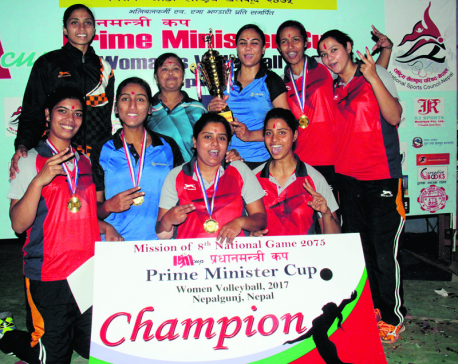
OR
India likely to allow Nepal to use three inland waterways
Published On: November 27, 2019 09:34 AM NPT By: Republica | @RepublicaNepal
KATHMANDU, Nov 27: India has given a positive response to Nepal’s proposal for allowing inland waterways in three routes and movement of bulk cargos via railway from Indian seaports to major Nepal-India border points.
The southern neighbor has expressed its consent during Nepal-India Transit Treaty Review meeting that kicked off in Kathmandu on Tuesday. The bilateral meeting will conclude on Wednesday.
Navaraj Dhakal, spokesperson of the Ministry of Industry, Commerce and Supplies, told Republica that the government teams of the two countries discussed various issues relating to simplifying Nepal’s transit routes via India.
Dhakal is leading the Nepali team while Bhupinder Singh Bhalla, joint secretary of the Department of Commerce at the Indian Ministry of Commerce and Industry, leads the Indian delegation.
Nepal has been seeking to use three inland waterways on Ganges River expanding its transit options to the sea. These include the Kolkata-Kalughat-Raxaul, Kolkata-Sahebgunj-Biratnagar, and Kolkata-Varanasi-Raxaul routes.
Last October, during talks held in New Delhi, the Indian side had agreed on principle to allow the landlocked country to use these inland waterways. India has developed a waterway on the Ganges River connecting Varanasi and the seaport of Haldiya, Kolkata. Access to the Indian waterways is expected to facilitate efficient movement of cargo imported from third countries to Nepal.
According to Dhakal, India was also positive toward facilitating railway-based transportation of bulk cargo from Kolkata and Vishakhapatnam seaports of India to Jogwani and Nautanwa, Sunauli, at the Nepal-India border.
Bulk cargo includes fertilizers, sugar, soybean, salt, animal feed and raw plastic materials among others. Currently, the bulk cargo items brought from third countries via Kolkata, Haldiya and Vishakhapatnam ports are imported to Nepal only through Birgunj border point.
Traders have long been demanding to allow diversifying the bulk cargo transport as it often takes more than a month for bulk cargos to reach Birgunj due to various hassles. Citing a lack of railway infrastructure, India had been saying that it was difficult to provide bulk cargo facility at other border points.
In 2012, the Nepal-India Inter-government Committee had agreed to expand the bulk cargo facility to Biratnagar and Bhairahawa border points. The agreement, however, was not implemented as the letter of exchange was not issued.
According to the ministry officials, the two sides also discussed on providing two Indian seaports to Nepal—Dhamra in Odisha and Mundra in Gujarat—for third-country trade. “The Indian officials, however, are skeptical on the issue,” said a ministry source.
You May Like This

Waterways to be built up to Nepal-India border areas
NEW DELHI Feb 12 : Visiting Minister for Energy, Water Resource and Irrigation Barshaman Pun and Indian Minister for Water Resource, River... Read More...

Govt set to operate railway service on two routes in Tarai by January 2019
KATHMANDU, June 21: The government has made preparation to bring Jayanagar-Janakpur-Kurtha and Bathnaha-Biratnagar railways into operation by January next year. Read More...

Railway Team defends PM Cup Volleyball title
NEPALGUNJ, March 1: Defending champion Railway Team, India, on Wednesday retained the title of the Prime Minister Cup Fourth Women's Volleyball... Read More...











Just In
- Challenges Confronting the New Coalition
- NRB introduces cautiously flexible measures to address ongoing slowdown in various economic sectors
- Forced Covid-19 cremations: is it too late for redemption?
- NRB to provide collateral-free loans to foreign employment seekers
- NEB to publish Grade 12 results next week
- Body handover begins; Relatives remain dissatisfied with insurance, compensation amount
- NC defers its plan to join Koshi govt
- NRB to review microfinance loan interest rate







Leave A Comment